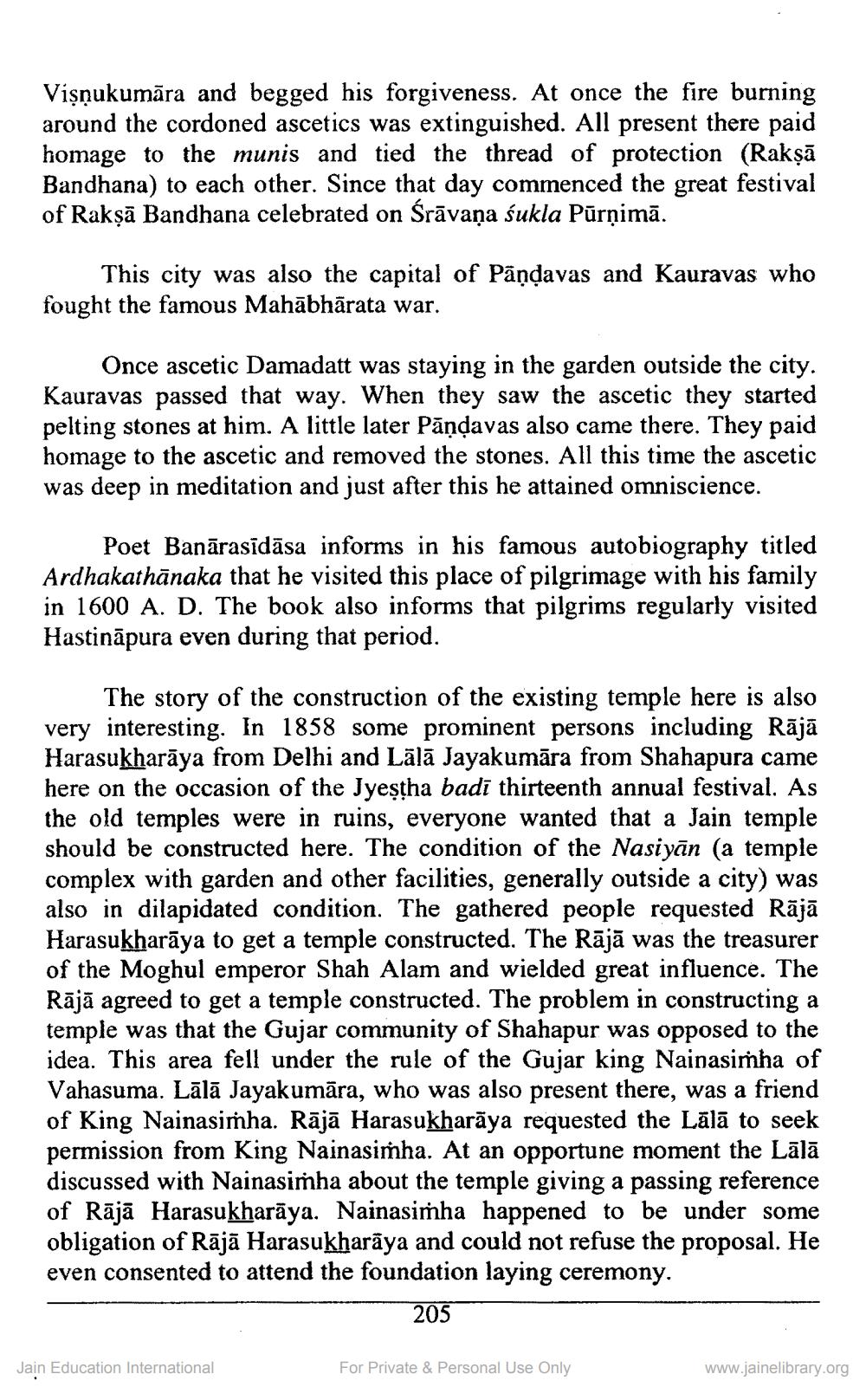________________
Vişnukumāra and begged his forgiveness. At once the fire burning around the cordoned ascetics was extinguished. All present there paid homage to the munis and tied the thread of protection (Raksā Bandhana) to each other. Since that day commenced the great festival of Raksā Bandhana celebrated on Śrāvaņa śukla Pūrņimā.
This city was also the capital of Pāņdavas and Kauravas who fought the famous Mahābhārata war.
Once ascetic Damadatt was staying in the garden outside the city. Kauravas passed that way. When they saw the ascetic they started pelting stones at him. A little later Pāņdavas also came there. They paid homage to the ascetic and removed the stones. All this time the ascetic was deep in meditation and just after this he attained omniscience.
Poet Banārasīdāsa informs in his famous autobiography titled Ardhakathānaka that he visited this place of pilgrimage with his family in 1600 A. D. The book also informs that pilgrims regularly visited Hastināpura even during that period.
The story of the construction of the existing temple here is also very interesting. In 1858 some prominent persons including Rājā Harasukharāya from Delhi and Lālā Jayakumāra from Shahapura came here on the occasion of the Jyeștha badī thirteenth annual festival. As the old temples were in ruins, everyone wanted that a Jain temple should be constructed here. The condition of the Nasiyān (a temple complex with garden and other facilities, generally outside a city) was also in dilapidated condition. The gathered people requested Rājā Harasukharāya to get a temple constructed. The Rājā was the treasurer of the Moghul emperor Shah Alam and wielded great influence. The Rājā agreed to get a temple constructed. The problem in constructing a temple was that the Gujar community of Shahapur was opposed to the idea. This area fell under the rule of the Gujar king Nainasiṁha of Vahasuma. Lālā Jayakumāra, who was also present there, was a friend of King Nainasimha. Rājā Harasukharāya requested the Lālā to seek permission from King Nainasimha. At an opportune moment the Lālā discussed with Nainasimha about the temple giving a passing reference of Rājā Harasukharāya. Nainasimha happened to be under some obligation of Rājā Harasukharāya and could not refuse the proposal. He even consented to attend the foundation laying ceremony.
205
Jain Education International
For Private & Personal Use Only
www.jainelibrary.org




